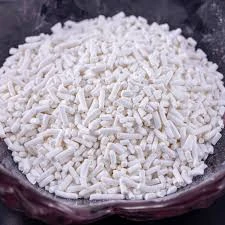
thickeners in food additives
Thickeners in Food Additives An Overview
Food thickeners, a crucial category of food additives, play a significant role in the culinary world by enhancing the texture, consistency, and overall mouthfeel of various food products. These ingredients, which can either be natural or synthetic, are utilized in a wide range of applications, from soups and sauces to desserts and dairy products. Understanding the function and types of thickeners can provide valuable insights into their importance in modern food production.
The Role of Thickeners
Thickeners serve multiple purposes in food preparation and manufacturing. Primarily, they help achieve the desired viscosity, which is essential for ensuring that a product has the right consistency. For instance, a creamy soup needs a different thickness than a clear broth, and thickeners enable manufacturers to achieve these specific textural goals. Additionally, thickeners can improve the stability of emulsions, prevent separation, and increase the shelf life of products by enhancing their resistance to settling.
Types of Thickeners
Thickeners can generally be categorized into two main types natural and synthetic.
thickeners in food additives

1. Natural Thickeners These are derived from plant or animal sources and include ingredients such as cornstarch, agar-agar, pectin, gelatin, and xanthan gum. Natural thickeners are often preferred by health-conscious consumers due to their organic origins. For instance, cornstarch is commonly used in gravies and puddings, while pectin is a key ingredient in jams and jellies, enhancing not only thickness but also flavor retention.
2. Synthetic Thickeners These are chemically engineered substances designed to enhance texture in a more controlled manner. Common synthetic thickeners include modified starches, cellulose derivatives like methylcellulose and carboxymethyl cellulose, and gum arabic. These additives can provide a more consistent product quality, which is particularly important in large-scale food production.
Health Considerations
While thickeners are generally recognized as safe by food regulatory bodies, some consumers express concerns about certain additives, particularly synthetic ones. It is essential to read food labels and understand the ingredients being consumed, especially for individuals with allergies or specific dietary restrictions. Natural thickeners may offer a cleaner label and are often perceived as healthier options.
Conclusion
Thickeners in food additives are indispensable for achieving the desired textures in a vast array of food products. By understanding the various types of thickeners and their functions, consumers can make informed choices about the foods they consume. Moreover, as the food industry continues to evolve with an increasing focus on health and transparency, the demand for natural thickeners is likely to rise. Whether using natural or synthetic options, the goal remains the same to improve food quality and enhance the eating experience. As we move forward, the role of thickeners will undoubtedly remain central to food innovation and culinary creativity.
-
Why Glacial Acetic Acid Food Grade Is Essential in FlavorNewsMay.26,2025
-
Surging Export Growth of Food Additives in ChinaNewsMay.26,2025
-
How Ammonium Nitrate Fertilizer Boosts Crop YieldsNewsMay.26,2025
-
How 1,2,3-Benzotriazole Shields Plastics from UV DegradationNewsMay.26,2025
-
Cyanide in Gold Mining: Protecting People and the PlanetNewsMay.26,2025
-
Aluminum Hydroxide in Modern Sunscreen FormulationsNewsMay.26,2025
-
Understanding Synthetic Rubber OptionsNewsApr.27,2025
Hebei Tenger Chemical Technology Co., Ltd. focuses on the chemical industry and is committed to the export service of chemical raw materials.
-

view more DiethanolisopropanolamineIn the ever-growing field of chemical solutions, diethanolisopropanolamine (DEIPA) stands out as a versatile and important compound. Due to its unique chemical structure and properties, DEIPA is of interest to various industries including construction, personal care, and agriculture. -

view more TriisopropanolamineTriisopropanolamine (TIPA) alkanol amine substance, is a kind of alcohol amine compound with amino and alcohol hydroxyl, and because of its molecules contains both amino and hydroxyl. -

view more Tetramethyl Thiuram DisulfideTetramethyl thiuram disulfide, also known as TMTD, is a white to light-yellow powder with a distinct sulfur-like odor. It is soluble in organic solvents such as benzene, acetone, and ethyl acetate, making it highly versatile for use in different formulations. TMTD is known for its excellent vulcanization acceleration properties, which makes it a key ingredient in the production of rubber products. Additionally, it acts as an effective fungicide and bactericide, making it valuable in agricultural applications. Its high purity and stability ensure consistent performance, making it a preferred choice for manufacturers across various industries.











